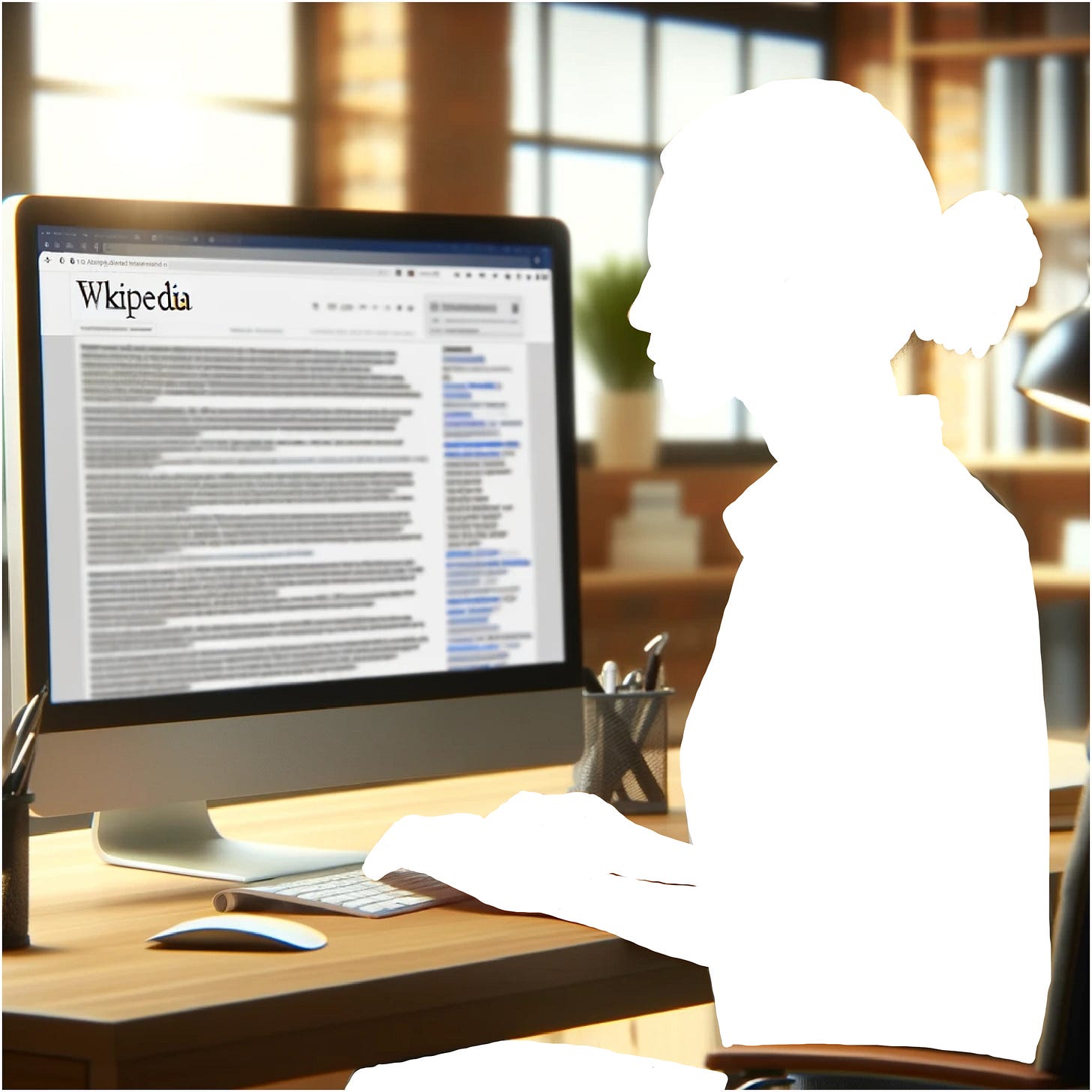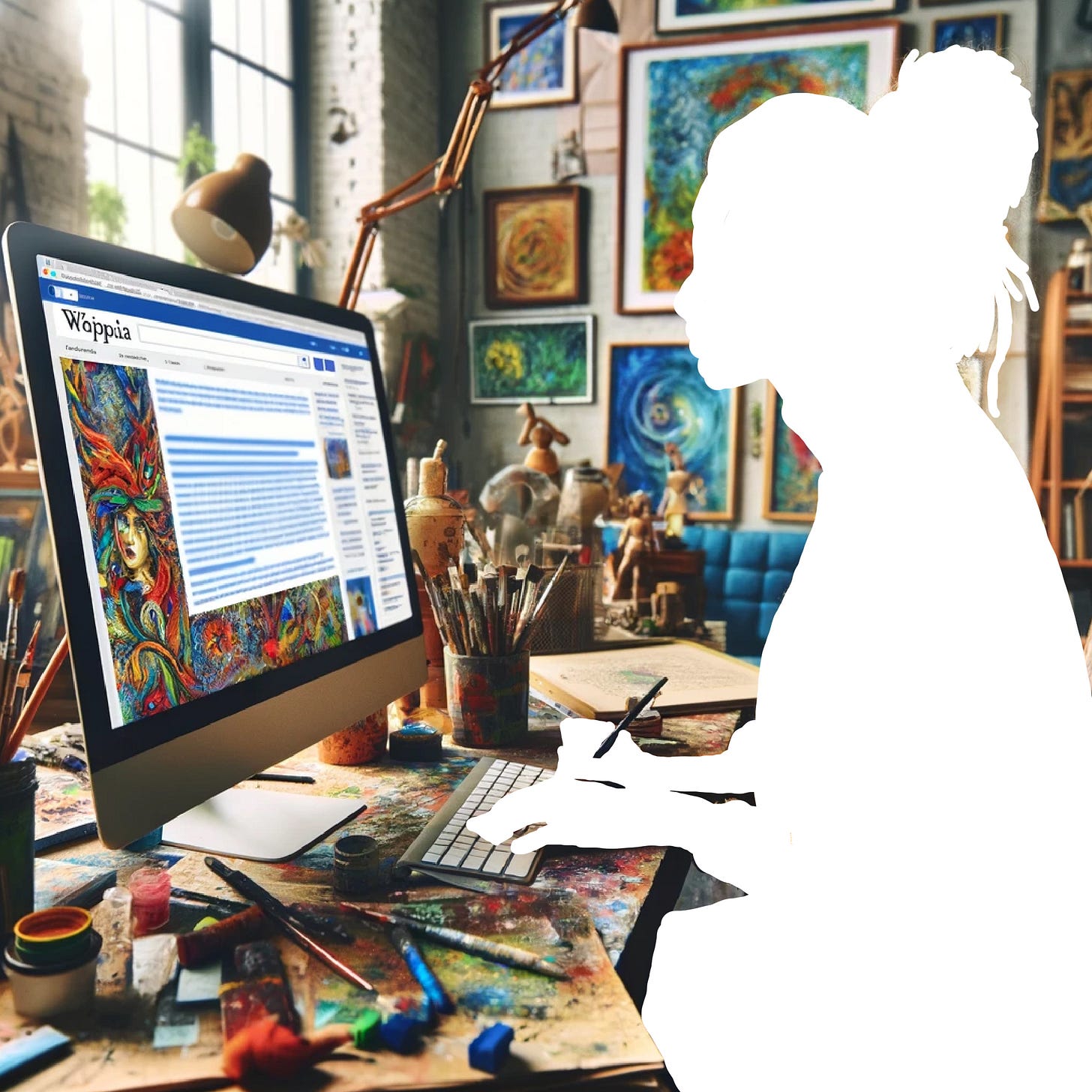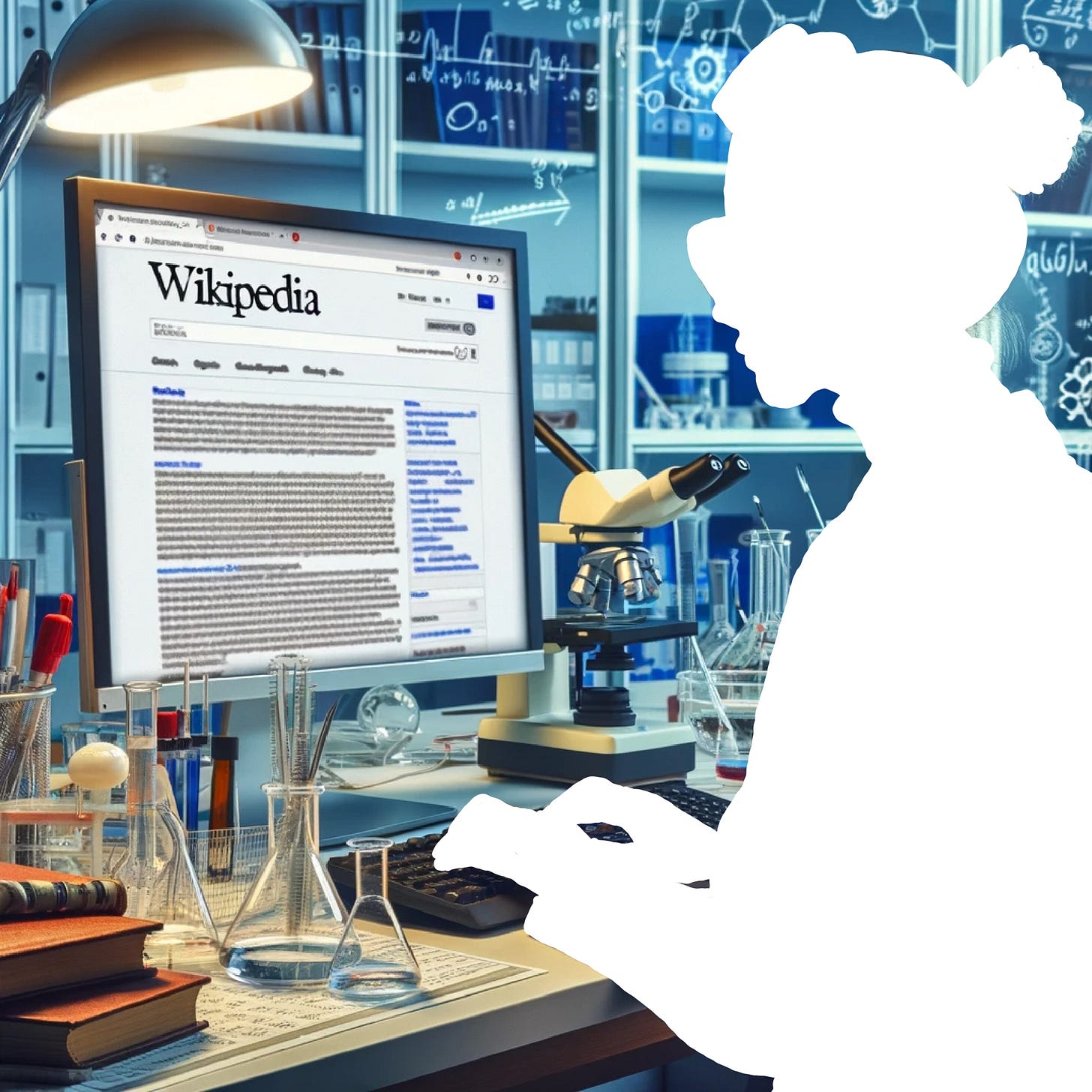On the Record
help us document women in comics with a Wikipedia Edit-a-thon
When I (Amaris) realized a male colleague of mine, same age, & similar publication history, had a Wikipedia page, I attempted to write one for myself and was rejected immediately—you aren’t supposed to write them for yourself, friends, or family…. It’s embarrassing to fess up to, but then, when writing the intro for our interview with Fiona Smyth, we found she did not have a Wikipedia page. We wondered: who else had been unjustifiably rejected? How many of the people we interview aren’t discoverable on Wikipedia?
According to the most recent Community Insights report, 13% of Wikipedia editors are women. The report also states that 80% of editors are male, 4% are gender diverse, and 4% preferred not to say. This skewed demographic can inadvertently lead to biases in terms of which topics are covered, the depth of coverage, and the perspectives presented. Although projects, like WikiProject Women in Red, aim to increase entries about women, bios about women remain appallingly low, at 19.68%. After a precursory search, it appears the number of entries for women and non-binary folks in comics must be even lower.
Every day, millions turn to this platform seeking knowledge, but the stories of countless women artists remain in the shadows.
It's not just an oversight—it's an injustice.
Why it Matters: By not sharing the full scope of female and non-binary accomplishments, we're depriving future generations of role models and inspiration. We're also perpetuating a digital gender bias that echoes centuries of silenced voices.
How You Can Help: Whether you're a seasoned Wikipedian, a writer, or someone who believes in gender equity, it's time to take a stand. Join our "Women in Comics Wiki Edit-a-thon" this month. Contribute to existing articles, create new ones, or simply learn more about the incredible women who've shaped the art world.
Let's rewrite history, one Wikipedia page at a time.
You can use our interviews with folks to help write and create citations for so many artists who don’t have wikipedia pages yet–join us in trying to add women and non-binary comics artists to the internet encyclopedia!
Here are women creators we’ve featured who don’t have a Wikipedia entry:
Women + non-binary artists to start with:
Kelcey Ervick - as of 11/21/23, Kelcey is live on Wikipedia!
Teresa Wong - as of 11/17/23, Teresa Wong is on Wikipedia!
Pages that could use some work:
How to get started
Creating a Wikipedia page for a female cartoonist (or anyone/anything else) involves a series of steps that ensure the content adheres to Wikipedia's guidelines. Here's a step-by-step guide:
Notability:
Before you start, ensure the cartoonist meets Wikipedia's notability guidelines. For creative professionals like cartoonists, notable contributions to their field, significant coverage in reliable, secondary sources, and awards are some factors that can establish notability.
Account Creation:
If you haven’t done so, create a Wikipedia account. This will allow you to create new pages and is recommended for tracking edits.
Research:
Compile reliable sources about the cartoonist. Academic journals, books, newspapers, and notable magazines are generally accepted. I recommend compiling a citations list in a Word doc.
Independent coverage (i.e., sources not affiliated with the cartoonist or self-published) is crucial. This is an unfortunate rule for a field that uses a lot of self-publishing and distros to get work into the world.
Start with a Draft:
Navigate to the Wikipedia Articles for Creation (AfC) project: https://en.wikipedia.org/wiki/Wikipedia:Articles_for_creation
Click on the “Submit a new article” link.
Write your draft using the VisualEditor or the classic editing window. Make sure to:
Use a neutral point of view.
Properly cite all your sources.
Format the article: include sections like "Early life," "Career," "Works," etc., as appropriate.
Referencing:
Citations are crucial on Wikipedia.
Every claim or fact you add should have a reference to a reliable source.
Infobox:
Consider adding an infobox for cartoonists or artists, which is a template that sits at the top right of the article, providing quick key details about the person.
Add Categories:
At the bottom of your article, add categories like “American/Canadian female cartoonists” or “21st-century female artists,” depending on the cartoonist’s background and work.
Submit for Review:
Once you're satisfied with the draft, you can submit it for review.
A Wikipedia editor will review your draft. If it meets the guidelines, it'll be moved to the main namespace.
Feedback:
Be open to feedback. Editors might ask for more references, clarifications, or suggest changes. It's part of the process.
Images:
If you want to add images, ensure they have the right permissions. Wikimedia Commons is where Wikipedia's images are stored, and they have strict copyright guidelines.
Maintenance:
Once the article is live, monitor it periodically. Update it with new information, and address any edits made by other users if necessary.
Follow Wikipedia's Five Pillars:
Wikipedia is an online encyclopedia.
Wikipedia has a neutral point of view.
Wikipedia is free content.
Wikipedians should interact in a respectful and civil manner.
Wikipedia does not have firm rules.
Wikipedia has a community of experienced editors who can help guide you. There are numerous resources, talk pages, and Wikipedia projects dedicated to assisting new contributors. Don't be afraid to ask questions or seek assistance.
Wikipedia aims to be a reflection of reliable, verifiable sources. However, if the sources themselves exhibit a gender bias (e.g., fewer reviews or features on female artists), then Wikipedia inadvertently mirrors this bias. Since Wikipedia is a major resource for researchers, journalists, and the general public, the under-representation on the platform can contribute to a feedback loop: When female writers or artists are not prominently featured on Wikipedia, they might be overlooked in contemporary discussions, interviews, or studies.
Join us in adding more women to “the sum of all human knowledge”!
Some more folks to consider, updated from the comments section:
Jennifer Hayden






While it makes perfect sense that Wikipedia reflects the biases of the sources its contributors pull from, I am SMACKED by the disparity in those percentages, both of women represented on Wikipedia and of the gender proportions of the editors. This makes me curious to see what women authors in genres I’m more familiar with (like poetry and nature writing) are as-yet-to-be-included.
Hey y’all, I wanted to note that I suspect there may be some bias in the reviewing process...and that may be contributing to bias in who’s featured on Wikipedia. What’s considered “notable” seems highly subjective...I’d love to hear about other cartoonists/readers’ Wikipedia writing experiences.